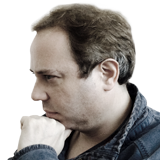Countless hours of videos, podcasts and television programs have been released, and reams of texts written on the subject of Russian President Vladimir Putin’s plans and objectives in unleashing hybrid war on Ukraine, all attempting to predict the Kremlin chief’s strategies, plans, and possible next moves.
But what if the Russian leader doesn’t actually have a plan to deal with the massive mess he has made of Russia’s formerly brotherly neighboring state? As the Ukrainian crisis lurches on from one disaster to the next, we have to admit that’s a possibility.
It has been said that Putin is a master tactician, but that he has no overall strategy guiding his actions. That’s not entirely true. Putin does indeed have a strategy.
The problem is that it’s a revanchist, ill-defined, and unrealistic strategy, based on wish-thinking, dreams of restoring Russia’s imperial greatness, and one that is motivated by regret and resentment over the collapse of the Soviet Union, combined with an overarching mistrust of the old enemy, the West.
At the beginning of the Ukraine crisis, it seemed as if Putin was entirely in control; level-headed and cool, pushing forward his agenda, leaving bumbling, disunited and, frankly, confused Western leaders struggling to respond to his actions.
Observers could only watch open-mouthed, as Putin’s Little Green Men – quite obviously Russian regular troops with their uniform markings removed – moved in to quietly annex Crimea while the Russian leader blithely denied having anything to do with it. The press, hamstrung by its own ethical standards, could not even report with certainty that which was obviously true – Russian troops had just carried out the first illegal invasion and armed annexation of a European territory since the end of the Second World War.
To many it was obvious what Putin’s next move would be – the destabilization and possible seizure of parts of eastern Ukraine, and that duly followed within a month of the sham referendum that ripped Crimea from Ukraine and fused it to Russia.
Groups of armed men in military fatigues, carry Russian weapons and equipment, seized administration and security buildings around Donetsk and Luhansk oblasts in obviously military-style operations. Again, to certain observers it was obvious who these men were – Russian special forces teams – and later we even found out the name of their leader – Igor Girkin (Strelkov) – and their number (only about 50 in all) from Girkin himself.
But things now started to go wrong for Putin.
The Kremlin, according to its alleged plan for Ukraine, which was leaked to the Russian newspaper Novaya Gazeta early this year, had been expecting Ukraine’s eastern oblasts to fall like dominoes. It had seen Kharkiv (wrongly) as being the most likely place for an insurgency to take root and grow, with Odesa a close second.
Instead, the revolutionary government in Kyiv, after a blundering and incompetent start, began to get its act together, launched its “Anti-Terrorist Operation” and was soon forcing the “rebels” back from the towns in the east they had seized. Russia’s attempt to neutralize Ukraine’s only military advantage – airpower – by supplying the militants with sophisticated air defense systems and Russian operators, resulted in the MH17 disaster of July 17, 2014, which, arguably, finally turned opinion in the West, both public and political, against Russia and behind Ukraine.
As Ukrainian forces squeezed the militants’ territories smaller and smaller, by August the situation had become critical for Russia, and it was forced to intervene with its own troops to stop the “rebel” forces collapsing and Ukraine regaining control of the territory the Kremlin’s proxy army had seized.
It’s safe to say that had not been part of the plan, and what plans the Kremlin had were now fast unravelling.
Russia never intended to become overtly involved in the Ukraine conflict, and to this day denies being so, even though the evidence that it is sending troops, weapons and ammunition into eastern Ukraine is all but undeniable.
Putin is now stuck with a situation that he had not envisaged. He cannot take ownership of the mess he has made in eastern Ukraine – it is an encumbrance that Russia’s already hobbled economy cannot bear. But neither can he force Kyiv to take ownership – his “rebel” proxies would not allow it, for one thing, and Kyiv clearly doesn’t want to, for another
The danger in this situation is that Putin will revert to the tactics that have worked for him in the past – more covert military action, a fresh offensive. The problem (for him) is that there is very little likelihood that such military action would succeed: Ukraine’s army is rapidly growing and strengthening. The “rebels” might gain a little more ground to add to the paltry plot they have carved out for themselves over the last year, but a full-scale offensive, which would have to have significant and blatant support from Russia’s own armed forces, would risk not only more crippling sanctions against Russia, but the West finally granting Kyiv defensive weapons. There might even be the prospect of a military defeat for Russia’s proxy army.
There is now a stark mismatch between Putin’s “strategy” (returning Russia’s influence and powers to the levels it enjoyed as the leading state of the Soviet Union) and his ability to carry it out.
And it is quite possible that the Russian leader simply doesn’t know what to do about it.


